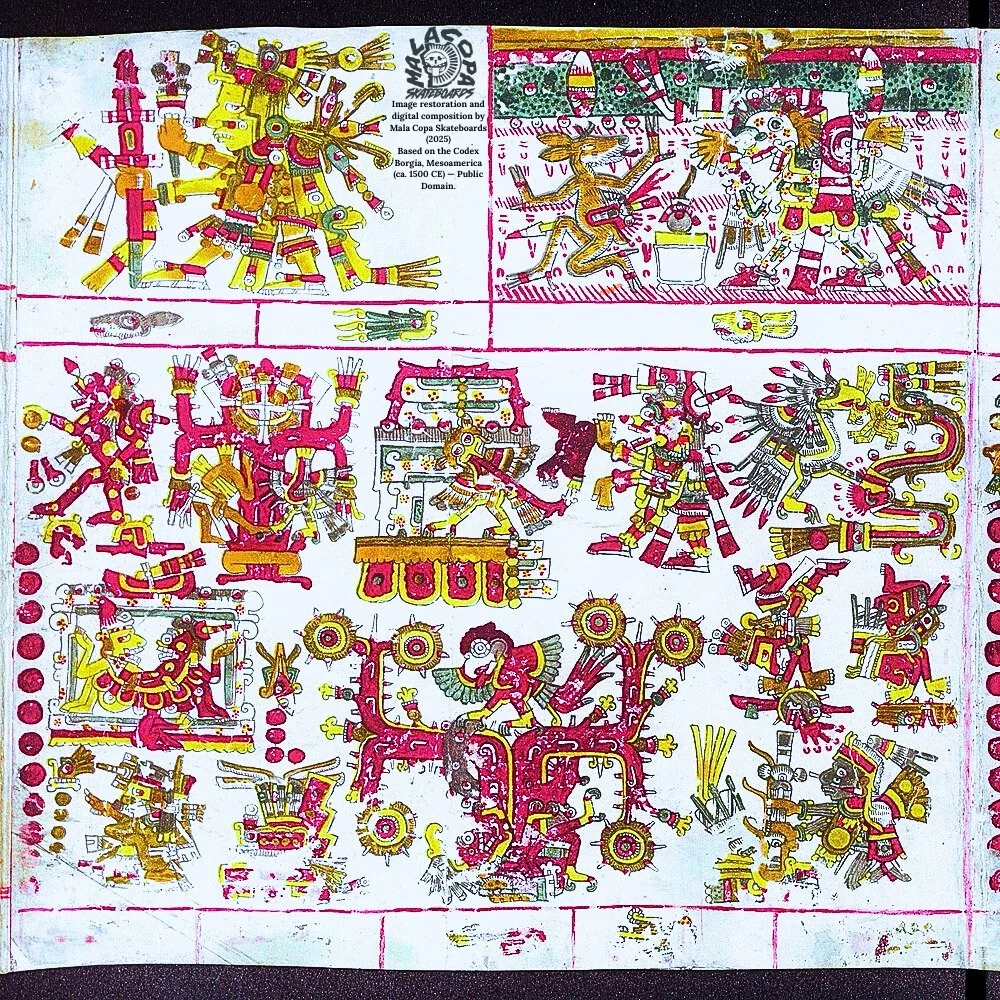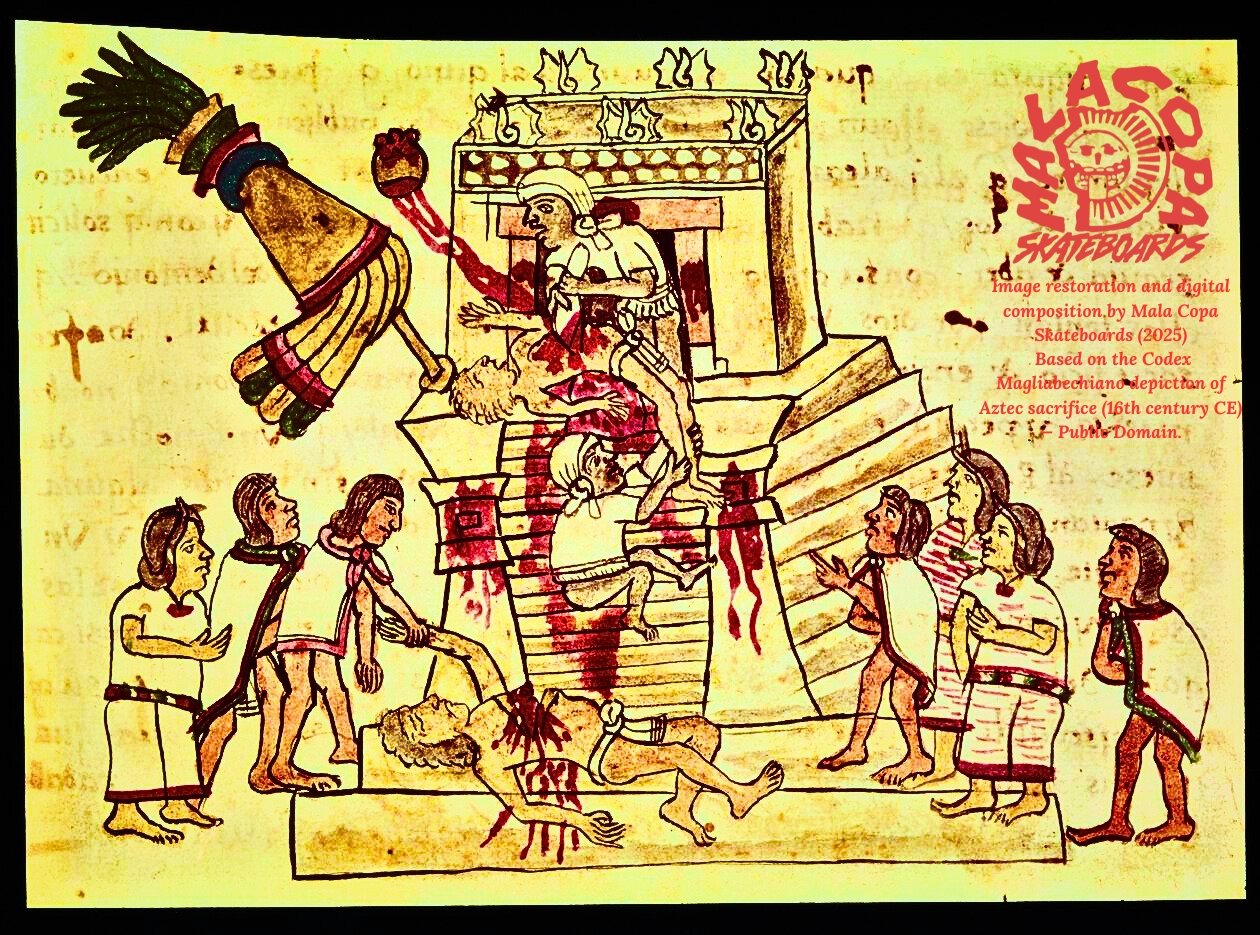The Death Disk of Mictlantecuhtli: Ancient Symbol of the Aztec Underworld
A Monument of Life, Death, and the Afterlife
Imagine a stone disk, carved almost 2,000 years ago, that wasn't just a grim relic, but a radiant symbol of cosmic rebirth. That’s the Death Disk of Mictlāntēcutli. This striking artifact perfectly embodies the ancient Aztec worldview, challenging our modern assumptions that death is merely an end.
Discovery & Location
In 1963, archaeologists made a profound discovery at the base of the mighty Pyramid of the Sun in Teotihuacan. They uncovered a circular basalt disc featuring a skull-faced deity. Today, this monumental piece of history is displayed for the world to see in the National Museum of Anthropology in Mexico City.
The God of Death
The object is a circular stone (c. 50 cm diameter) carved in high relief to show Mictlāntēcutli, the terrifying yet necessary god of death. His skeletal features and an often-extended tongue—ready to consume the stars or the dead—immediately grab your attention.
But this is the disk's deepest secret: the skeletal god of darkness is ringed by a radiating solar "halo" motif. This incredible paradox beautifully illustrates the ancient Aztec belief that death is simply the sun setting on earth so it can begin its dark journey through the underworld, only to rise again. It’s a true fusion of death and light.
Cultural Context: The Cosmic Cycle
Created during Teotihuacan’s classical period (ca. 1–600 CE), the disc reflects a worldview that fully accepted death as a crucial part of the cosmic order.
The later Aztecs worshipped Mictlāntēcutli as the formidable ruler of Mictlán, the nine-layer underworld where most humans traveled after death. Far from being a place of punishment, Mictlán was a stage in the cyclical journey. This artifact stands at the crossroads of monumental architecture, ritual practice, and cosmology, showing that the end was always viewed as a prelude to a new beginning.
Why It Matters Today
The Death Disk illustrates how ancient Aztecs perceived the interplay between life and death, light and darkness. Its original placement at Teotihuacan’s largest ceremonial pyramid suggests that death was not confined to burials but was "monumentalized" in public, religious spaces.
For anyone exploring the ancient Americas, this artifact connects us to a culture that regarded existence as cyclical: each ending—each descent into the underworld—was also a potential rebirth. It challenges modern assumptions about death as taboo, showing how art was employed to give profound meaning to both life’s spark and its inevitable extinguishing.
The Death Disk is a silent, stone monument reminding us that death isn't a final end to be feared, but a descent that precedes the possibility of a cosmic rebirth.













